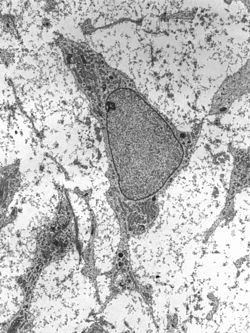Facilities
Scientific research facilities on the National Lab provide infrastructure and equipment to conduct experiments in microgravity. [6] Facilities typically remain on station for extended periods of time to support repeat and long-term research opportunities. Many facilities are managed by private sector companies. [7] Facility managers support use of the on-station equipment for investigations from organizations other than the hardware's developer and owner, validating a business model for in-orbit commercial services at lower costs. [6] [7] The National Lab now has 14 commercially operated laboratory facilities managed by eight companies, including two newly installed facilities in FY18 and one new facility manager. [8]
Additive Manufacturing Facility: by utilizing a 3D printer, this manufacturing facility can perform station maintenance, build tools, upgrade and install new hardware and repair sections of the ISS in case of an emergency. [9] Its manufacturing capabilities also support a wide range of commercial interests on the ISS. [9]
ADvanced Space Experiment Processor (ADSEP): this thermally controlled facility accommodates experiments in cell technology, model organisms, multiphase fluids, solution chemistry, separation science, microencapsulation, and crystal growth. [10]
Bone Densitometer: this facility provides bone density scanning of mice during space flight, which helps researchers study human bone disease. [11]
Materials ISS Experiment-Flight Facility (MISSE-FF): a facility that tests materials, coatings, and components in space. [12] Experiments will show how materials react to ultraviolet radiation (UV), atomic oxygen (AO), ionizing radiation, ultra-high vacuum (UHV), charged particles, thermal cycles, electromagnetic radiation, and micrometeoroids. [12] Industries that benefit from testing include Advanced Materials, Automotive, Aeronautics, Energy, Space (flight hardware, astronaut clothing and protection), Transportation and Micro-meteoroid On-Orbit Debris (MMOD). [12]
Multi-use Variability-g Platform (MVP): a facility that provides artificial gravity, temperature, humidity, oxygen and carbon dioxide control when testing in space. [13] It supports research in Drosophila , C. Elegans , cultured cells, plants, aquatic animals, protein crystallization, tissue chips, and functional gravity studies. [13]
MUSES (Multi User System for Earth Sensing): this facility hosts earth-viewing instruments, such as high-resolution digital cameras and hyperspectral imagers, and provides precision pointing. [14] The data gathered from this facility can be used for: Maritime domain awareness, Agricultural Awareness, Food security, Disaster response, Air quality, Oil/Gas Exploration, Fire detection, and Heritage Preservation. [14]
Nanoracks CubeSat Deployer : a device that is designed to deploy satellites, or CubeSats, into orbit from the ISS. [15] A CubeSat is a stackable, modular, ground loaded launch case that can accommodate up to 6.5U. [16] The CubeSat deployer system can mechanically and electrically isolate CubeSats from the ISS, cargo resupply vehicles, and ISS crew. [15]
Nanoracks External Platform: installed on the outside of the ISS, this is the first external commercial research capability for sensor, material and electronic testing that can be retrieved and returned to Earth. [17] It delivers research results concerning biological testing, sensor target testing, satellite communications components testing, power systems testing, and materials testing. [18]
Nanoracks Internal Platform (Nanolab): measuring 10 cm by 10 cm by 10 cm, this is a box unit that flies a researcher's project to the ISS. [19] This miniaturized hardware has a circuit board that activates the experiment, turns it off and can be functioned for other activities. NanoLabs are plugged into the facility's platform using a USB port, allowing data and power to flow. [19]
Nanoracks PlateReader: a laboratory instrument designed to detect biological, chemical or physical events of samples in microtiter plates. [20] Microplate readers are widely used in research, drug discovery, bioassay validation, quality control and manufacturing processes in the pharmaceutical and biotechnological industry. [20] It also has temperature control capability, making long-term incubation of samples possible, such as measuring microbial growth or monitoring gene expression. [20]
Space Automated Bioproduct Lab (SABL): can be used for experiments in the life, physical and material sciences with a focus on supporting research of biological systems and processes. [21] Microorganisms, small organisms, animal cells, tissue cultures, and small plants are studied in this lab. [21]
Space Technology and Advanced Research Systems (STaARS): a research platform with the capacity to support physical science, advanced biotechnology, and life science research by providing reliable temperature control, controllable experiment hardware, and rapid flight access. [22] Findings impact pharmaceutical, tissue engineering, regenerative medicine, biofuel, and discovery sciences. [22]
TangoLab-1: a fully automated, multipurpose, reconfigurable general research facility on the ISS. [23]
TangoLab-2: a fully automated, multipurpose, reconfigurable general research facility on the ISS. [24] The primary difference between TangoLab-1 and TangoLab-2 is an upgraded fan system which allows for a greater heat rejection capability. This enables research with greater power draw and lower temperature requirements. [24]



